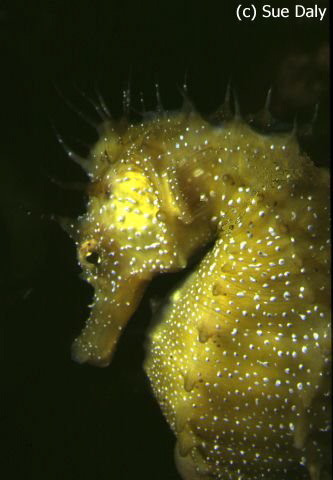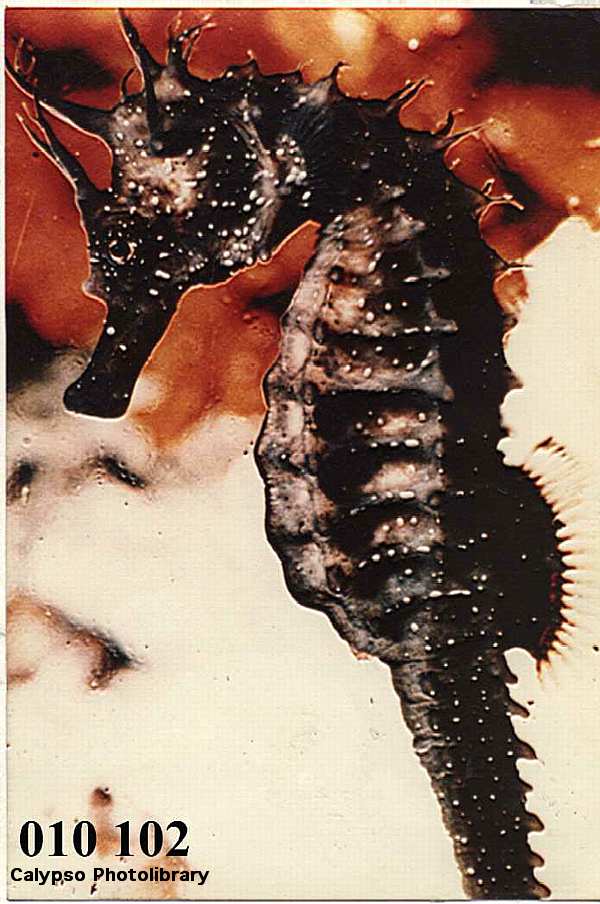Identification:
Typical sea-horse shape, which cannot be confused with the pipe fishes. The
head is bent downwards from the erect body posture, and has a long prehensile
tail that lacks the caudal fin. Camouflage maybe enhanced by individuals
sporting differing lengths of appendages, running from the head down to the
dorsal fin.
This particular species of sea-horse is distinguished by having a straight
snout that is more than a third of the head length. The dorsal fin is composed
of 18 to 21 rays, although typically 19. It is the main source of propulsion
for sea-horses and may beat up to 70 times a second. The anal fin is diminutive,
and is to be found almost in line with the posterior end of the dorsal fin.
The chameleon like eyes are able to move independently of each other, and
are used to great effect to target prey. The overall body colouration, ranges
from greenish yellow through to redish brown and often reflects the associated
vegetation/substrate, and is speckled with bluish white spots and flecks.
Breeding:
This occurs during April through until October.
Like other sea-horses, it is the males role to incubate the eggs inside the
pouch located in the upper tail region. The juveniles are retained, and are
not released until they have reached 15mm in size.
Habitat:
This is a summer visitor to northern European seas, and is normally
to be found in inshore shallows, associated with sea-grasses such as
eel-grass, and beds of seaweed/fine algae. The sea-horses maybe found attached
to the plants by means of their prehensile tails, although obviously not
fixed. On occasions they maybe washed into deeper waters, or encountered
during their annual migrations.
Food:
Feeds mainly on very small crustaceans, which are snapped up by the sucking
action of the snout, being coordinated by the independently moving eyes.
Range:
This visitor tends to be restricted to the southern
and western coasts of the UK, although maybe encountered as far north as
Scotland.
Additional Notes:
|

